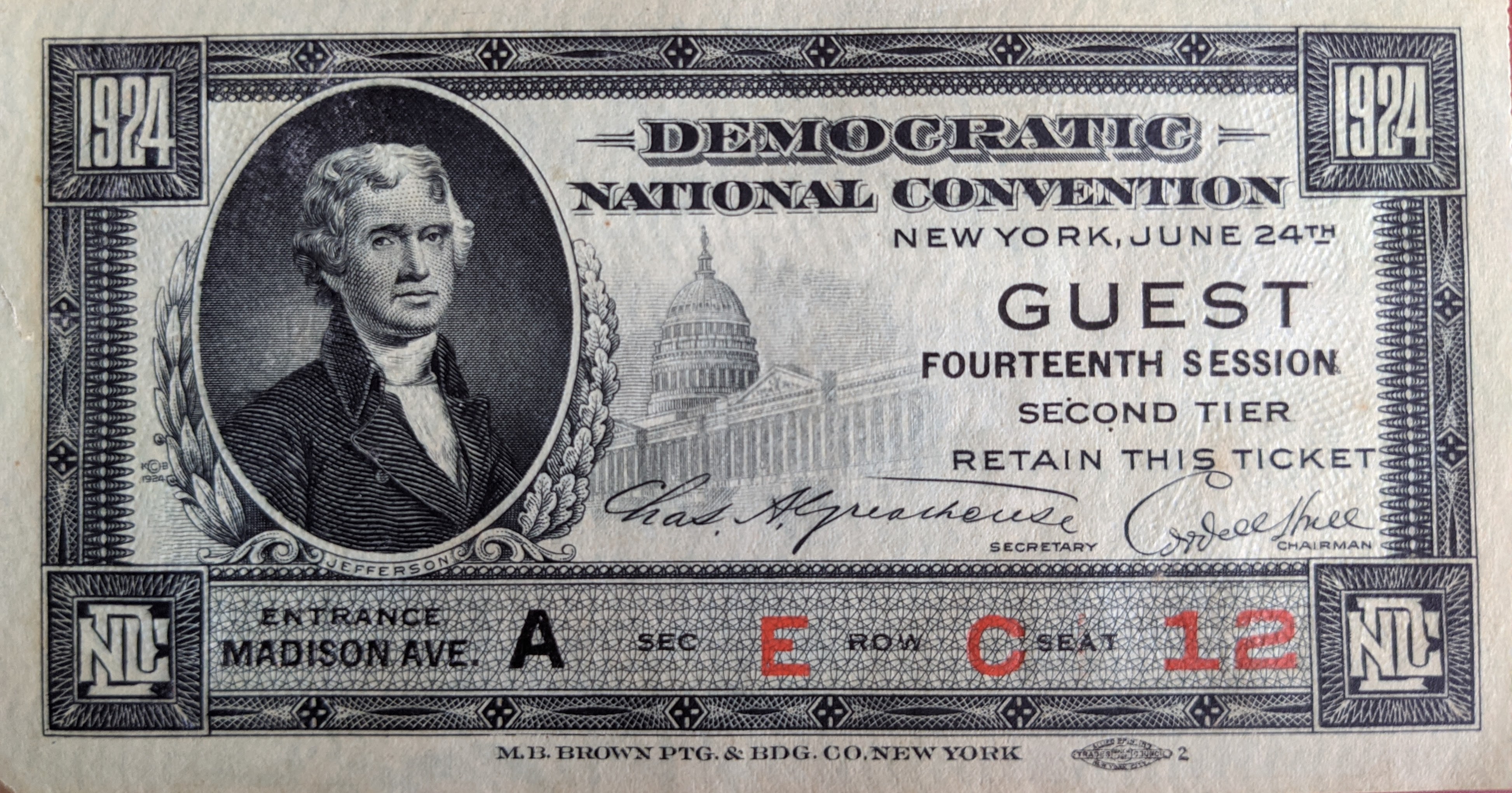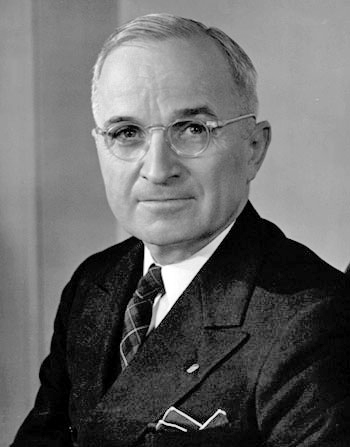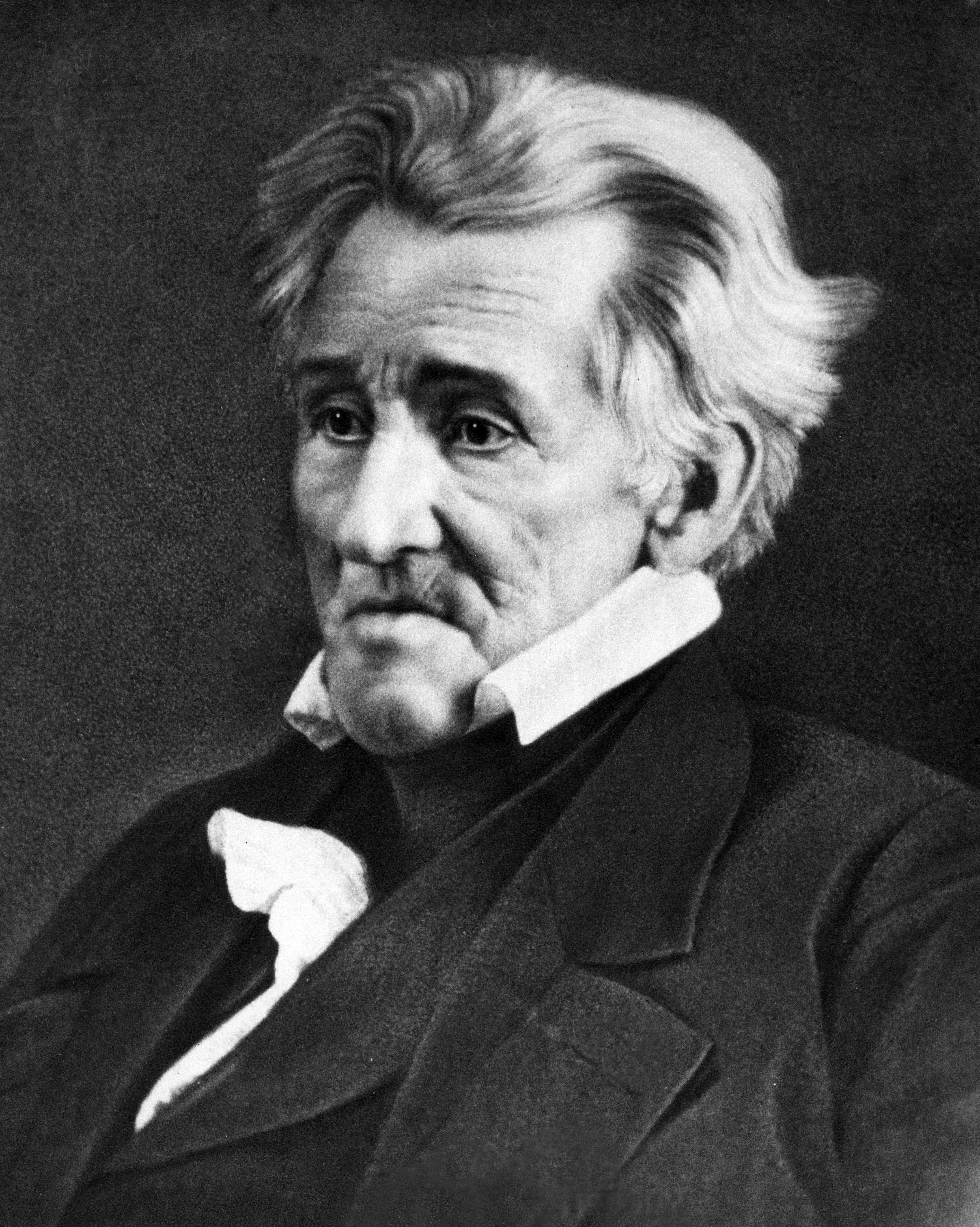|
1924 United States Presidential Election
Presidential elections were held in the United States on November 4, 1924. The Republican ticket of incumbent President Calvin Coolidge and Director of the Bureau of the Budget Charles Dawes defeated the Democratic ticket of John Davis and Nebraska Governor Charles Bryan and the Progressive ticket of Senator Robert La Follette and Senator Burton Wheeler. Coolidge was the second vice president, after Theodore Roosevelt, to ascend to the presidency and then win a full term. Coolidge had been vice president under Warren G. Harding and became president in 1923 upon Harding's unexpected death. Coolidge was given credit for a booming economy at home and no visible crises abroad, and he faced little opposition at the 1924 Republican National Convention. The Democratic Party nominated former Congressman and ambassador to the United Kingdom John W. Davis of West Virginia. Davis, a compromise candidate, triumphed on the 103rd ballot of the 1924 Democratic National Convention ... [...More Info...] [...Related Items...] OR: [Wikipedia] [Google] [Baidu] [Amazon] |
Electoral College (United States)
In the United States, the Electoral College is the group of presidential electors that is formed every four years for the sole purpose of voting for the President of the United States, president and Vice President of the United States, vice president in the United States presidential election, presidential election. This process is described in Article Two of the United States Constitution, Article Two of the Constitution. The number of electors from each U.S. state, state is equal to that state's United States congressional apportionment, congressional delegation which is the number of List of current United States senators, senators (two) plus the number of US Representatives, Representatives for that state. Each state Article II of the United States Constitution#Clause 2: Method of choosing electors, appoints electors using legal procedures determined by its State legislature (United States), legislature. Federal government of the United States, Federal office holders, inclu ... [...More Info...] [...Related Items...] OR: [Wikipedia] [Google] [Baidu] [Amazon] |
United States Presidential Election
The election of the president of the United States, president and Vice President of the United States, vice president of the United States is an indirect election in which citizens of the United States who are Voter registration in the United States, registered to vote in one of the fifty U.S. states or in Washington, D.C., cast ballots not directly for those offices, but instead for members of the United States Electoral College, Electoral College. These electors then cast direct votes, known as electoral votes, for president and for vice president. The candidate who receives an absolute majority of electoral votes (at least 270 out of 538, since the Twenty-third Amendment to the United States Constitution, Twenty-third Amendment granted voting rights to citizens of D.C.) is then elected to that office. If no candidate receives an absolute majority of the votes for president, the United States House of Representatives, House of Representatives elects the president; likewise if ... [...More Info...] [...Related Items...] OR: [Wikipedia] [Google] [Baidu] [Amazon] |
William Gibbs McAdoo
William Gibbs McAdoo Jr.McAdoo is variously differentiated from family members of the same name: * Dr. William Gibbs McAdoo (1820–1894) – sometimes called "I" or "Senior" * William Gibbs McAdoo (1863–1941) – sometimes called "II" or "Junior" * Lt. William Gibbs McAdoo Jr. (1895–1960) – sometimes called "III" (October 31, 1863 – February 1, 1941) was an American lawyer and statesman. McAdoo was a leader of the Progressive movement and played a major role in the administration of his father-in-law, President Woodrow Wilson. A member of the Democratic Party, he also represented California in the United States Senate. Born in Marietta, Georgia, McAdoo moved to Knoxville, Tennessee, in his youth and graduated from the University of Tennessee. He established a legal practice in Chattanooga, Tennessee, before moving to New York City in 1892. He gained fame as the president of the Hudson and Manhattan Railroad Company and served as the vice chairman of the Democratic ... [...More Info...] [...Related Items...] OR: [Wikipedia] [Google] [Baidu] [Amazon] |
1924 Democratic National Convention
The 1924 Democratic National Convention, held at the Madison Square Garden (1890), Madison Square Garden in New York City from June 24 to July 9, 1924, was the longest continuously running convention in United States political history. It took a record 103 ballots to nominate a presidential candidate. It was the first major party national convention that saw the name of a woman, Lena Springs, placed in nomination for vice president. John W. Davis, a dark horse, eventually won the presidential nomination on the 103rd ballot, a compromise candidate following a protracted convention fight between distant front-runners William Gibbs McAdoo and Al Smith. Davis and his vice presidential running-mate, List of governors of Nebraska, Governor Charles W. Bryan of Nebraska, went on to be defeated by the Republican ticket of President Calvin Coolidge and Charles G. Dawes in the 1924 United States presidential election, 1924 presidential election. Site selection New York had not been chos ... [...More Info...] [...Related Items...] OR: [Wikipedia] [Google] [Baidu] [Amazon] |
1924 Republican National Convention
The 1924 Republican National Convention was held in Cleveland, Ohio, at the Public Auditorium, from June 10 to 12. Incumbent President Calvin Coolidge was nominated for a full term and went on to win the general election. The convention nominated former Illinois Governor Frank Orren Lowden for vice president on the second ballot, but he declined the nomination. The convention then selected Charles G. Dawes. Also considered for the nomination was Senator Charles Curtis of Kansas, a future vice president. Delegates For this convention the method of allocating delegates changed in order to reduce the overrepresentation of the South. This effort proved only partly successful as Southern delegates proved to be more overrepresented than they had been in 1916 or 1920, though they were not as overrepresented as they had been in 1912 and earlier. There were 120 female delegates, 11% of the total. The Republican National Committee approved a rule providing for a national committee ... [...More Info...] [...Related Items...] OR: [Wikipedia] [Google] [Baidu] [Amazon] |
Warren G
Warren Griffin III (born November 10, 1970) is an American rapper, songwriter, record producer, and DJ who helped popularize West Coast hip hop during the 1990s.Steve Huey"Warren G: Biography" ''AllMusic.com'', Netaktion LLC, visited May 8, 2020. A pioneer of G-funk, he attained mainstream success with his 1994 single " Regulate" (featuring Nate Dogg). He is credited with discovering Snoop Dogg, having introduced the then-unknown rapper to record producer Dr. Dre. His debut studio album, '' Regulate... G Funk Era'' (1994), debuted at number two on the U.S. ''Billboard'' 200, selling 176,000 in its first week. The album has since received triple platinum certification by the Recording Industry Association of America (RIAA), signifying sales of three million copies. "Regulate" spent 18 weeks within the top 40 of the ''Billboard'' Hot 100, with three weeks at number two, while its follow-up, " This D.J.", peaked at number nine. At the 37th Annual Grammy Awards, both songs recei ... [...More Info...] [...Related Items...] OR: [Wikipedia] [Google] [Baidu] [Amazon] |
Vice President Of The United States
The vice president of the United States (VPOTUS) is the second-highest ranking office in the Executive branch of the United States government, executive branch of the U.S. federal government, after the president of the United States, and ranks first in the United States presidential line of succession, presidential line of succession. The vice president is also an officer in the Legislative branch of the United States federal government, legislative branch, as the president of the Senate. In this capacity, the vice president is empowered to Presiding Officer of the United States Senate, preside over the United States Senate, but may not vote except to List of tie-breaking votes cast by the vice president of the United States, cast a tie-breaking vote. The vice president is indirect election, indirectly elected at the same time as the president to a four-year term of office by the people of the United States through the Electoral College (United States), Electoral College, but the ... [...More Info...] [...Related Items...] OR: [Wikipedia] [Google] [Baidu] [Amazon] |
Theodore Roosevelt
Theodore Roosevelt Jr. (October 27, 1858 – January 6, 1919), also known as Teddy or T.R., was the 26th president of the United States, serving from 1901 to 1909. Roosevelt previously was involved in New York (state), New York politics, including serving as the state's List of governors of New York, 33rd governor for two years. He served as the 25th Vice President of the United States, vice president under President William McKinley for six months in 1901, assuming the presidency after Assassination of William McKinley, McKinley's assassination. As president, Roosevelt emerged as a leader of the History of the Republican Party (United States), Republican Party and became a driving force for United States antitrust law, anti-trust and Progressive Era policies. A sickly child with debilitating asthma, Roosevelt overcame health problems through The Strenuous Life, a strenuous lifestyle. He was homeschooled and began a lifelong naturalist avocation before attending Harvard Colleg ... [...More Info...] [...Related Items...] OR: [Wikipedia] [Google] [Baidu] [Amazon] |
Burton K Wheeler
Burton Kendall Wheeler (February 27, 1882January 6, 1975) was an attorney and an American politician of the Democratic Party in Montana, which he represented as a United States senator from 1923 until 1947. Born in Massachusetts, Wheeler began practicing law in Montana almost by chance, after losing his belongings while en route to Seattle. As the U.S. Attorney for Montana, he became known for his criticism of the Sedition Act of 1918 and defense of civil liberties during World War I. An independent Democrat who initially represented the progressive wing of the party, he received support from Montana's labor unions in his election to the Senate in 1922. As a freshman senator, Wheeler played a crucial role in exposing the Harding administration's unwillingness to prosecute people involved in the Teapot Dome scandal. He ran for vice president in 1924 on the Progressive Party ticket headed by Wisconsin Senator Robert La Follette Sr. An ardent New Deal liberal until 1937, Whee ... [...More Info...] [...Related Items...] OR: [Wikipedia] [Google] [Baidu] [Amazon] |
Nebraska Governor
The governor of Nebraska is the head of government of the U.S. state of Nebraska as provided by the fourth article of the Constitution of Nebraska. The officeholder is elected to a four-year term, with elections held two years after presidential elections. The governor may be elected any number of times, but not more than twice in a row. The current officeholder is Jim Pillen, a Republican, who was sworn in on January 5, 2023. Governors of Nebraska must be at least 30 years old and have been citizens and residents of the state for five years before being elected. Before 1966, the governor was elected to a two-year term. In 1962, a constitutional amendment extended the gubernatorial term to four years, effective with the 1966 election. In 1966, another amendment imposed a term limit of two consecutive terms. The lieutenant governor is subject to the same limitations and runs on a combined ticket with the governor. Charles W. Bryan is the only Governor of Nebraska to serve non-co ... [...More Info...] [...Related Items...] OR: [Wikipedia] [Google] [Baidu] [Amazon] |
History Of The Democratic Party (United States)
The Democratic Party (United States), Democratic Party is one of the two major political parties of the United States political system and the oldest active Political parties in the United States, political party in the country. Founded in 1828, the Democratic Party is the oldest active voter-based political party in the world. The party has changed significantly during its nearly two centuries of existence. Once known as the party of the "common man", the early Democratic Party stood for individual rights and state sovereignty, and opposed banks and high tariffs. In the first decades of its existence, from 1832 to the mid-1850s (known as the Second Party System), under Presidents Andrew Jackson, Martin Van Buren, and James K. Polk, the Democrats usually defeated the opposition Whig Party (United States), Whig Party by narrow margins. Before the American Civil War, the party generally supported slavery or insisted it be left to the states. After the war until the 1940s, the part ... [...More Info...] [...Related Items...] OR: [Wikipedia] [Google] [Baidu] [Amazon] |
Charles Dawes
Charles Gates Dawes (August 27, 1865 – April 23, 1951) was the 30th vice president of the United States from 1925 to 1929 under President Calvin Coolidge. He was a co-recipient of the Nobel Peace Prize in 1925 for his work on the Dawes Plan for World War I reparations, and a member of the Republican Party. Born in Marietta, Ohio, Dawes attended Cincinnati Law School before beginning a legal career in Lincoln, Nebraska. After serving as a gas plant executive, he managed William McKinley's 1896 presidential campaign in Illinois. After the election, McKinley appointed Dawes as the Office of the Comptroller of the Currency, Comptroller of the Currency. He remained in that position until 1901 before forming the Central Trust Company of Illinois. Dawes served as a general during World War I and was the chairman of the general purchasing board for the American Expeditionary Forces. In 1921, President Warren G. Harding appointed Dawes as the first director of the Office of Management a ... [...More Info...] [...Related Items...] OR: [Wikipedia] [Google] [Baidu] [Amazon] |








